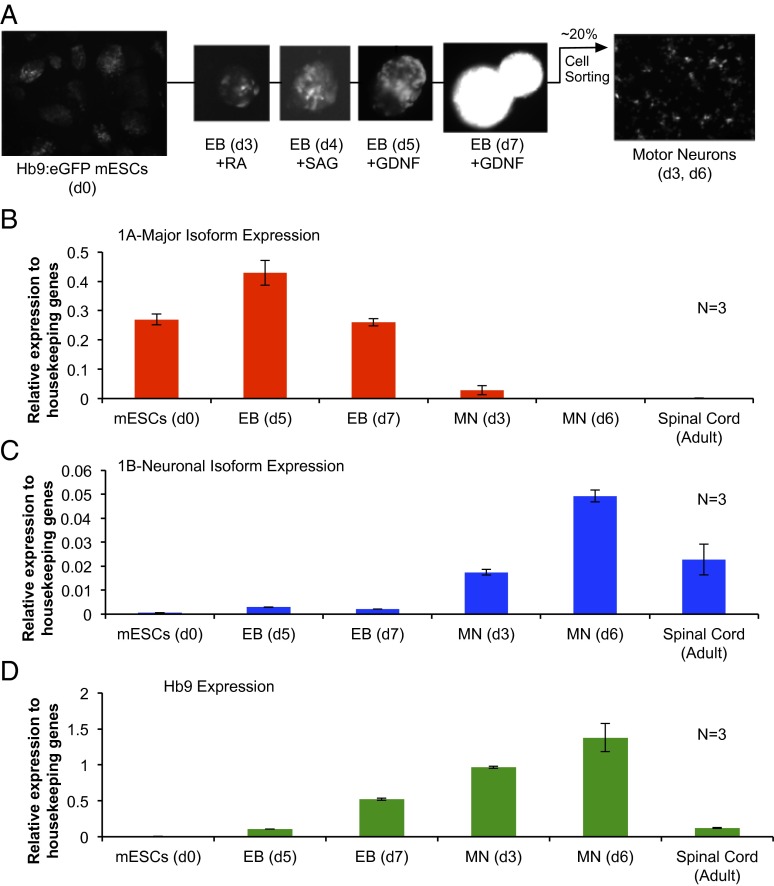Fig. 4.
Promoter use switches from the maternal to paternal isoform of Grb10 during motor neuron differentiation in vitro. (A) Schematic of motor neuron differentiation. Mouse ESCs that express eGFP under the control of the promoter of an early motor neuron marker, Hb9 (d0), are used to form embryoid bodies (EBs). To induce neuralization, EBs are treated with retinoic acid (RA) on day 3 of differentiation. To induce ventralization of neural tissue and motor neurons, Smoothened agonist (SAG) is added to the EB culture on differentiation day 4. Glial cell-derived neurotrophic factor (GDNF) is added to EB culture post day 5 to promote neuronal survival. On day 7 of differentiation, EBs are dissociated and FACs-sorted based on eGFP expression, with an approximate 20% yield of motor neurons. (B–D) The maternally expressed major (1A) isoform of Grb10 is repressed during the differentiation process whereas the paternally expressed neuronal-specific (1B) isoform is up-regulated. These changes in expression correlate with the maturation of motor neurons as quantified by Hb9 expression, a marker for motor-neuron fate. For comparison, levels of expression of each of these genes in the adult spinal cord are shown.

